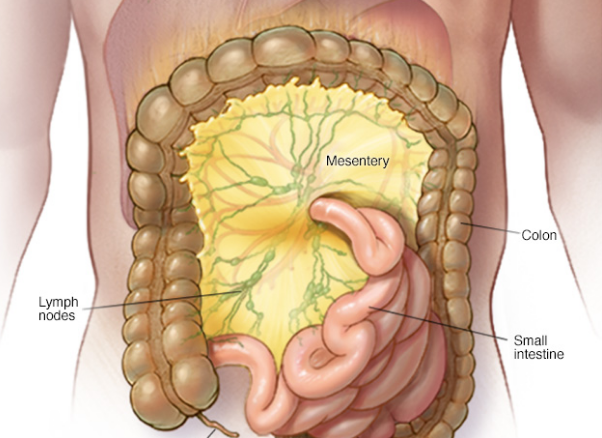The mesentery, a double membrane which connects the intestine to the abdomen and anchors the guts to the rest of the body, may be the 79th organ in the human body.
Before now, the mesentery was classified as a discontinuous tissue that curls around the abdomen.
Experts thought it was composed of several segments of tissue, as opposed to being one structure, hence, it wasn’t considered an organ.
An organ must be one structure that performs a very important function.
But a new anatomical research conducted by scientists at University of Limerick, Ireland, has shown that the mesentery is one single band of tissue.
“We are now saying we have an organ in the body which hasn’t been acknowledged as such to date. The anatomic description that had been laid down over 100 years of anatomy was incorrect. This organ is far from fragmented and complex. It is simply one continuous structure,” said lead researcher and colorectal surgeon, Calvin Coffey.
“Without it, you can’t live. There are no reported instances of a Homo sapien living without a mesentery
“Understanding how and why our digestive system is arranged the way it is could be crucial to our understanding of diseases like Crohn’s and irritable bowel syndrome,” Coffey added.
“There are a lot of diseases that we are stalled on, and we need to refresh our approach to these diseases. Now that we’ve clarified its [the mesentery’s] structure, we can systematically examine it. We’re at a very exciting place right now.”
The discovery was published in the Lancet Gastroenterology & Hepatology journal.
Copyright 2025 TheCable. All rights reserved. This material, and other digital content on this website, may not be reproduced, published, broadcast, rewritten or redistributed in whole or in part without prior express written permission from TheCable.
Follow us on twitter @Thecablestyle

